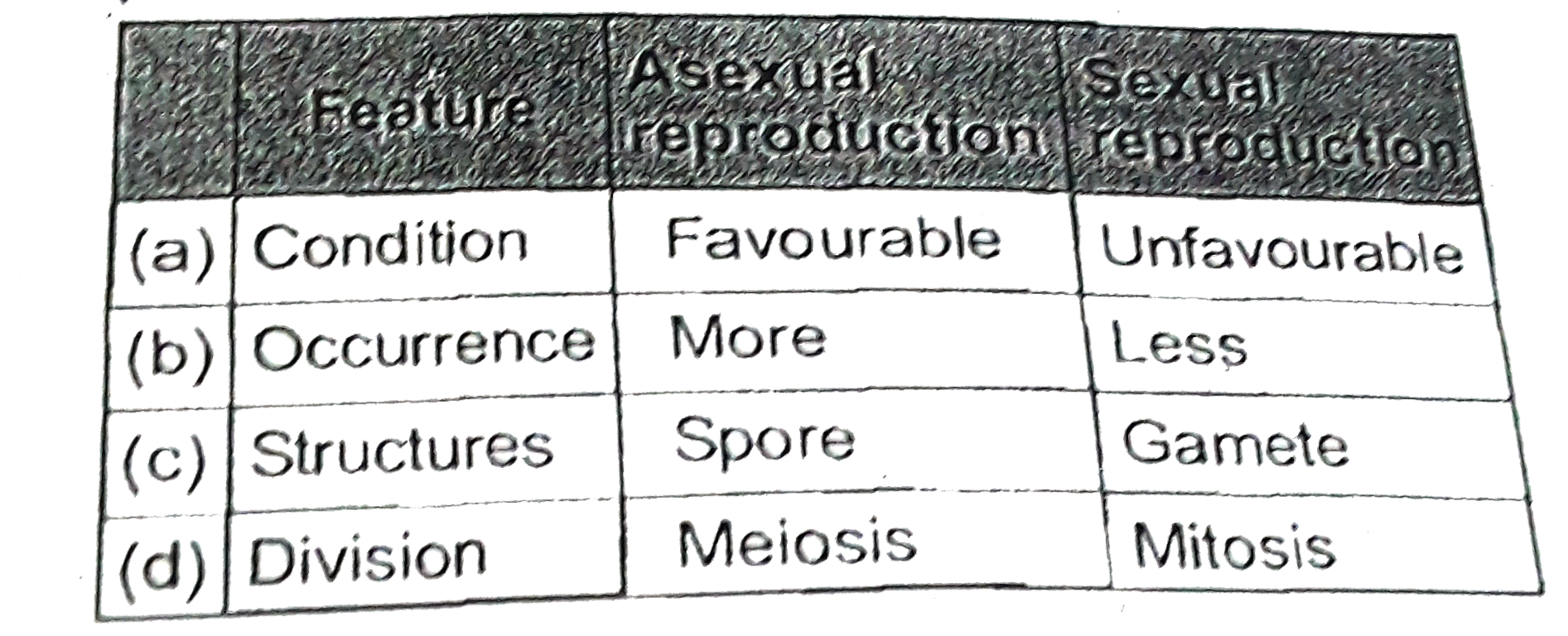Which of the following statements, support the view that elaborate sexual reproductive process appeared much later in the organic evolution ?
(i) Lower groups of organisms have simpler body design.
(ii) Asexual reproduction is common in lower groups.
(iii) Asexual reproduction is common in higher groups of organisms.
(iv) The high incidence of sexual reproduction in angiosperms and vertebrates.
Choose the correct answer given below.
I and III
I and III
II and IV
II and III
The correct Answer is:C
Asexual reproduction (budding) has been found in most primitive animals like Hydro but over the evolutionary time as the or advanced organisms came into existence, they resorted the sexual reproduction as it ensures the genetic recombination that results in variation.
Topper's Solved these Questions
Similar Questions
State true or false :
(i) Sexual reproduction is always biparental
(i) Sexual reproduction or may not be present in reproduction which produces variations
(iii) Most common method of reproduction in lower plants is asexual one
View SolutionChoose correct option for asexual and sexual reproduction in organisms that have a relatively simple organisation.

View Solution
Knowledge Check
Which of the following statements, support the view that elaborate sexual reproductive process appeared much later in the organic evolution ?
(i) Lower groups of organisms have simpler body design.
(ii) Asexual reproduction is common in lower groups.
(iii) Asexual reproduction is common in higher groups of organisms.
(iv) The high incidence of sexual reproduction in angiosperms and vertebrates.
Choose the correct answer given below.Ai, ii and iiiBi, iv and iiiCi, ii and ivDii, iv and iiiWhich of the following statements, support the view that elaborate sexual reproduction process appeared much later in the organic evolution .
i. Lower groups of organisms have simpler body
ii. Asexual reproduction is common in lower group.
iii. Asexual reproduction is common in higher groups of organisms.
iv. The high incidence of sexual reproduction occurs in angiosperms and vertebrates.
Choose the correct answer from the options given below :Aiand iiiBiand iiiCi,ii and ivDii and iiiWhich of the following statements are true for flowers ?
(i) They are the sexual reproductive organs.
(ii) They are produced in all groups of plants.
(iii) Flowers are always bisexual
(iv) After fertilisation they give rise to fruits.A(i) and (iv)B(ii) and (iii)C(i) and (iii)D(ii) and (iv)
Which of the following cause(s) variation in the genetic material of progeny?
1. Sexual reproduction 2. Asexual reproduction 3. Mutations 4. Epigenetic changes
Select the correct answer using the code given below.
View SolutionWhich of the following statements are true for flowers?
(i) Flowers are always bisexual
(ii) They are the sexual reproductive organs
(iii) They are produced in all groups of plants
(iv) After fertilisation they give rise to fruits
View SolutionA few statements with regard to sexual reprodction are given below.
(i) Sexual reproduction does not always require two individuals.
(ii) Sexual reproduction generally involves gametic fusion.
(iii) Meiosis never occurs during sexual reproduction.
(iv) External fertilisation is a rule during sexual reproduction.
Choose the correct statements from the option below.
View SolutionWhich of the following statements are true for flowers?
(i) Flowers are always bisexual.
(ii) They are the sexual reproductive organs.
(iii) They are produced in all groups of plants.
(iv) After fertilisation they give rise to fruits.
View SolutionWhich of the following statements are correct ?
a.The gamete transfer is a crucial step of sexual reproductive .
b. In algae and fungi , both gametes are mostly non - motile
c. In most of higher organisms, the female gamete is stationary
d . In most of the organisms, fertilization is internal.
View Solution

